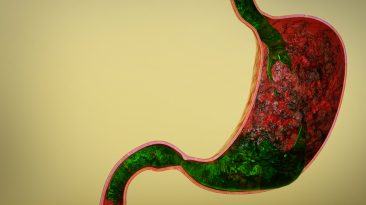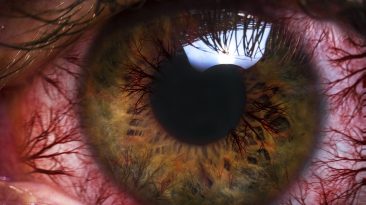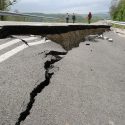In 1918, the world was at war. While soldiers fought each other on the frontlines, an even greater threat emerged, the Spanish flu. Between 50 to 100 million people died from this pandemic, representing as much as five percent of the world’s population.
Yet, despite all this devastation, the Spanish flu accelerated medical science and global partnerships. It helped prepare the world for pandemics like COVID-19. But what if it never happened?
How did the Spanish flu change healthcare? Would the outcome of World War I be different? What would life be like today?
The world was a very different place in the early 1900s before the Spanish flu hit. With just a quarter of today’s population, infectious diseases were a bigger concern than viruses, which were not fully understood or widely known.
There were no tests or treatments for viruses. And even if vaccines could have been distributed, no commercial airliners existed. The horse and buggy was still the most popular form of transportation. Unless, of course, you were rich enough to afford the Model T, dear boy.
Even owning a telephone was considered a luxury. Illiteracy was much higher, meaning news traveled slower and was often distorted. But the biggest news around the globe was the rising threat of the war. With Europe in a state of turmoil, troops from all over the world were huddled together in close confines, creating the perfect breeding ground for influenza.
So what happened next?
The first wave of the Spanish flu struck in the spring of 1918, at the tail end of World War I. For the most part, it was mild. People suffered symptoms like fever, fatigue, and chills. And they recovered in less than a week.
But just when it seemed that everything was fine, fall rolled around. A second wave hit with a vengeance. People died within days or even hours of developing symptoms. Many deaths were caused by suffocation from a fluid build-up in the lungs.
Spain was hit particularly hard. Madrid reported the first news of the flu in late May. But we shouldn’t blame them. Although Spain brought the virus to the world’s attention, it is believed that it originated in the United States. The first known case was in Fort Riley, Kansas, on March 11th. Some scientists theorize that it spread to other military camps across the country before being brought overseas.
While many pandemics are known to affect the elderly and the weak, it just as quickly afflicted healthy young adults. It was especially deadly to soldiers, who often crowded together in muddy trenches, trains, and ships.
There were no effective treatments for the flu. No vaccines or antiviral medication existed. Healthcare workers were in short supply due to the war. Aspirin was recommended in high doses of 30 g (1 oz) per day to alleviate symptoms. But with 4 g (.14 oz) being the maximum safe dosage we know today, many deaths were caused by aspirin poisoning. The Spanish flu infected about 500 million people worldwide and killed an estimated three percent of the global population.
It killed possibly more people than World War 1 and World War 11 put together. So let’s imagine that it never happened. Would we be overpopulated? Well, the war would have still been in full force. But soldiers wouldn’t be losing family members at home and would have had more hope for the future.
The flu interrupted training efforts and made many military personnel sick. Without the pandemic, the war likely would have had a similar outcome. But maybe more troops would have survived.
With more resources and troops available, you would think things could have been much different. But even though commanding officers claimed the flu was affecting fighting strength and morale, it equally affected both sides of the war. So many historians theorize that the outcome of the war would be similar. Germany wouldn’t have been able to blame the loss of the war on the pandemic.
Switzerland wouldn’t have almost had a civil war over the inadequate response to the pandemic. The independence movement of India was strengthened after the pandemic was mishandled by colonial leadership. So politically, things could be very different today.
Many governments in the 1920s started embracing the concept of socialized medicine or healthcare for all. Maybe this wouldn’t have happened, and there would still be a higher class division when it comes to healthcare. One of the most significant outcomes was the World Health Organization, which opened in 1919 in Vienna, Austria.
It marked the beginning of a new global philosophy that health is a fundamental right for every human being, without distinction of race, religion, political belief, economic or social condition. Without the World Health Organization, we could have suffered even more losses in the pandemics that followed, including COVID-19.
Many Western nations became disillusioned by medical science after the Spanish flu. As a result, alternative medicines took off in America and spread around the world. But for other countries that weren’t as involved with medical science, the opposite happened. The pandemic inspired better public health and a more organized approach to scientific research.
In 1920, a huge baby boom occurred. Scientists theorize that the survivors of the pandemic were healthier and able to reproduce in higher numbers. So if your grandparents or great grandparents were born around this time, well, if it weren’t for the pandemic, you might not exist today. The Spanish flu brought crippling losses, but it taught us how to handle global health crises more effectively. History can be our greatest teacher. But let’s consider another alternate history. What if the Spanish flu was even more devastating and wiped out the majority of the human race? If there were only a thousand people left on Earth, could we survive as a species?
Sources
- “Spanish Flu”. 2021. HISTORY.
- “Partner Key Messages On The 1918 Influenza Pandemic Commemoration | Pandemic Influenza (Flu) | CDC”. 2021. cdc.gov.
- “The U.S. Military And The Influenza Pandemic Of 1918–1919”. Byerly, Carol. 2010. Public Health Reports 125 (Suppl 3): 82.
- “Death from 1918 pandemic influenza during the First World War: a perspective from personal and anecdotal evidence”. Wever, Peter C., and Leo Bergen. 2014. Influenza And Other Respiratory Viruses 8 (5): 538-546. doi:10.1111/irv.12267.
- “A century on, why are we forgetting the deaths of 100 million?”. Martin, Kettle. 2018. The Guardian.
- “How The 1918 Flu Pandemic Revolutionized Public Health”. Laura, Spinney. 2017. Smithsonian Magazine.



























